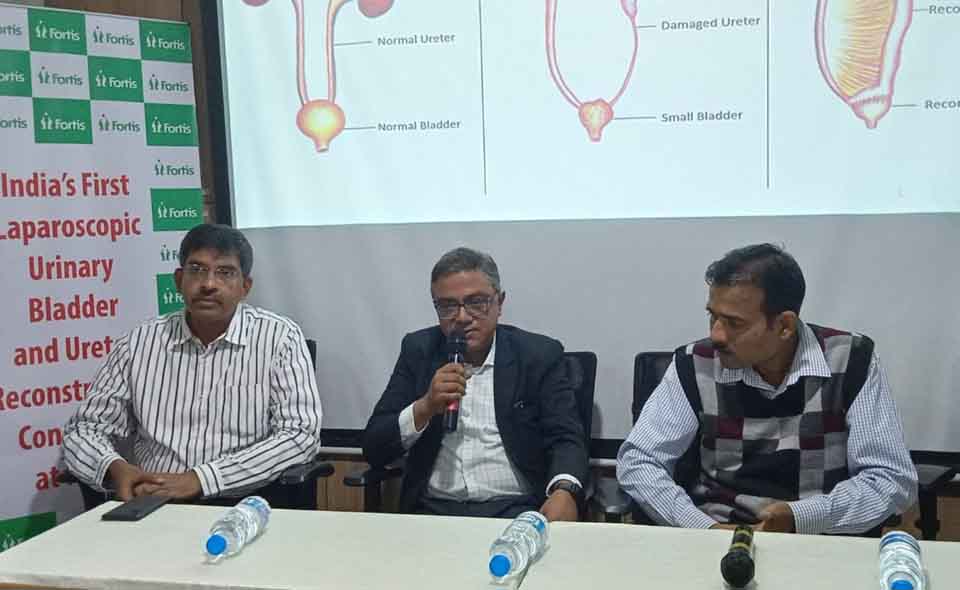India’s 1st Laparoscopic Urinary bladder and Ureter reconstruction conducted at Fortis Hospital, Kolkata
3 min read
Chandigarh, December 20, 2022: Fortis Hospital, Kolkata successfully conducted India’s first Laparoscopic reconstruction of the kidney tube (Ureter) and Urinary bladder (Laparoscopic augmentation cystoplasty with ileal ureter replacement) on a patient with advanced tuberculosis (TB)of the urinary tract. Dr. R. K. Gopalakrishna, Laparoscopic Urosurgeon, Fortis Kolkata along with his team performed an extremely critical and challenging surgery on a 48-year-old patient. As per the available medical records, this is the first of its kind surgery performed in India.
Patient Ashim Kumar Saha, a resident of Durgapur was undergoing treatment for advanced TB of the urinary tract for the past six months at Fortis Kolkata. The disease had affected his kidneys, urinary bladder and ureter which had fibrosed and shrunken, leading to complete obstruction of the left kidney. While the normal capacity of a bladder is around 400 ml to 500 ml, his urinary bladder had shrunken to a capacity of 150 ml, which is about ⅓ of its original size. The patient had difficulty passing urine, with frequent urination in the night – almost eight times, along with painful urination. His left kidney tube was obstructed, with only his right kidney functioning normally. Earlier, while reconstructing the ureter and bladder for a condition like this, doctors across have so far adopted a traditional method of open surgery, as it is a complex and critical reconstruction. However, Doctors at Fortis Kolkata took a new approach by undertaking a minimally invasive method of Laparoscopy.
According to Dr. R.K. Gopalakrishna, Laparoscopic Urosurgeon, Fortis Kolkata, Anandapur, “The patient was in immense pain and his condition deteriorated with each passing day. Laparoscopic reconstruction of the urinary bladder was the only option to restore the bladder’s normal capacity and also the left ureter which was damaged. Generally, this kind of reconstruction is done by performing open surgeries which involve a rather large cut in the abdomen, and the patient needs to be hospitalized for over a week. In this particular case, the surgery was done entirely via laparoscopy with just four tiny holes in the abdomen. While this is not the first case of the reconstruction of the passage, it is the first case that has been performed laparoscopically. Also in the traditional approach, a stapler device is used to sew up the intestine, but here we have hand-sewn the bowel using sutures. This again is the first time where staplers were not used, eliminating the cost of staplers. Laparoscopy surgery has many advantages in comparison to open surgery. There are risks involved in open surgery – pain due to large incisions, slower recovery and the chances of hernia post-operatively. Laparoscopic surgery is identical to robotic surgery but much less expensive.
Patient Ashim Kumar Saha said “I drive an auto rickshaw as my profession. Tuberculosis had reduced my bladder size and partly damaged a kidney; I was in a lot of pain and required to urinate frequently which had affected my work and income. The doctors at Fortis hospital suggested a Laparoscopic reconstructive surgery for faster recovery and minimal pain. Now after the surgery, my bladder capacity has increased , I am not urinating frequently.”




